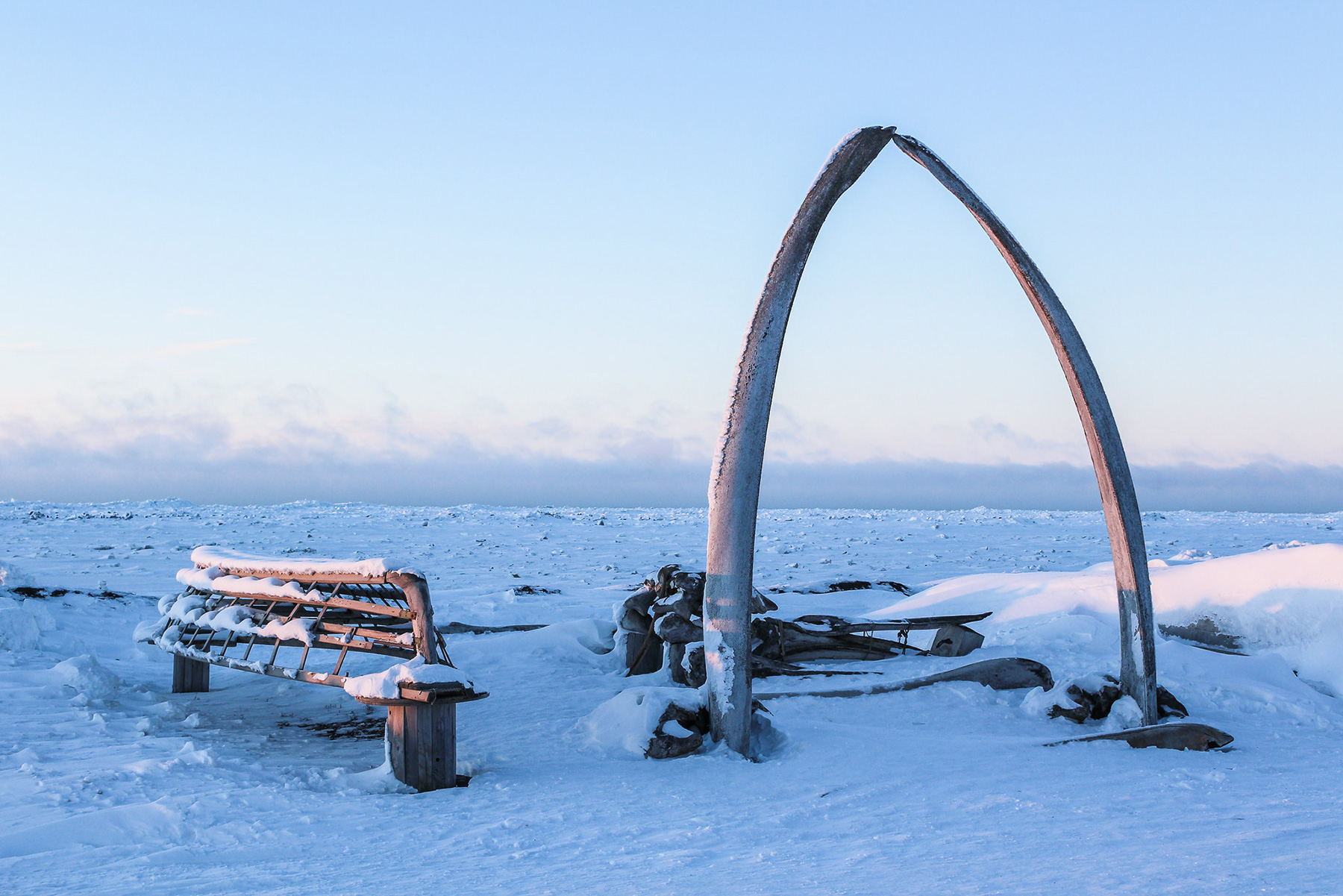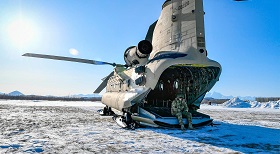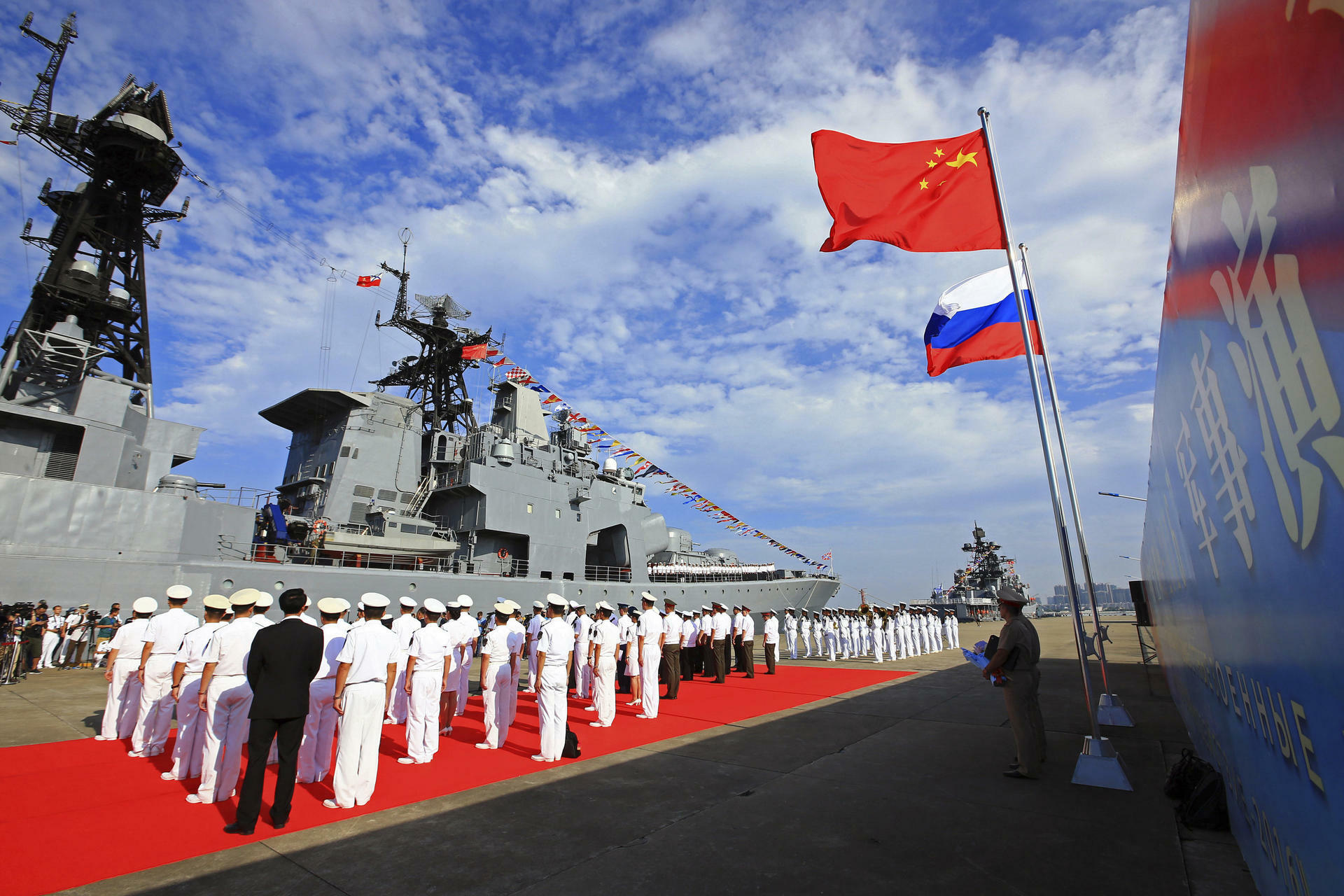In the midst of a deepening multidimensional crisis in contemporary international relations, it is increasingly important to ensure a nation’s survival. The latter can be construed as the resilience of national economy under a long-term instability of the global markets, restricted trade-economic and investment opportunities, unfair competition and transport blockade. Furthermore, the national political system must be capable of ensuring a normal flow of social activities as well as of protecting the vital interests from a wide range of challenges and threats. The Arctic accounts for a third of Russia’s entire territory and, according to Russian President Vladimir Putin, new Arctic and northern territories will be attached to Russia in the decades to come.
From a military perspective, Russia’s presence in the Arctic is contingent upon the physical deployment of strategic nuclear forces in this region, along with strategic non-nuclear capabilities to prevent individual or collective aggression by other nations. The area’s importance is proved by the fact that the national leadership has raised the status of the Northern Fleet by turning it into a military district.
The promotion of Russian interests in the Arctic is fraught with certain difficulties, mainly related to multiple scenarios and uncertainty regarding the plans, penchants and activities of other nations. Amidst the cessation of investment and technological cooperation with the West, the key transport, energy and infrastructure projects in the Arctic need to be revisited. The emphasis on interaction with Asian partners (primarily China, India, ASEAN and countries of the Middle East) is undoubtedly justified by the logic of forming a workable alternative to Western domination. However, the most important financial, technological and logistical issues are yet to be addressed, to ensure reliable and uninterrupted operation of the NSR and Arctic projects.
In the midst of a deepening multidimensional crisis in contemporary international relations, it is increasingly important to ensure a nation’s survival. The latter can be construed as the resilience of national economy under a long-term instability of the global markets, restricted trade-economic and investment opportunities, unfair competition and transport blockade. Furthermore, the national political system must be capable of ensuring a normal flow of social activities as well as of protecting the vital interests from a wide range of challenges and threats. The Arctic accounts for a third of Russia’s entire territory and, according to Russian President Vladimir Putin, new Arctic and northern territories will be attached to Russia in the decades to come.
Expansion in the Arctic
The fact that the Arctic and subarctic regions are already generating at least 10% of the GDP and about 20% of Russia’s export, with a significant potential for further growth in absolute indicators, could be used as a reference data highlighting the importance of Russia’s “Arctic third”. Today, 17% of all Russian oil, 80% of natural gas and about one third of fish are produced in the Arctic belt. The continental shelf is rightly considered a strategic stockpile of explored mineral resources to secure hundreds of years of prudent consumption. The Northern Sea Route (NSR), for all the complexities and controversial points in its operation, is a real working sea lane for commodity transportation. In 2021, this artery was used to deliver a record 33.5 million tons of cargo, with liquefied natural gas (LNG) and gas concentrate accounting for one third of transported freights. By 2024, the traffic volume may reach 80 million tons, and by 2030 – up to 110 million tons, largely due to oil projects and booming coastal voyages.
From a military perspective, Russia’s presence in the Arctic is contingent upon the physical deployment of strategic nuclear forces in this region, along with strategic non-nuclear capabilities to prevent individual or collective aggression by other nations. The area’s importance is proved by the fact that the national leadership has raised the status of the Northern Fleet by turning it into a military district. The Northern Fleet’s united strategic command (USC) is called to ensure the integrated security of Russia – unified management of all forces and means across the vast expanse from Murmansk to Anadyr. The USC includes the Air Force and Air Defense Army as well as a special Arctic brigade (the plan calls for the formation of at least two such brigades). The key bases of the Arctic forces—Polar Star on Wrangel Island, Arctic Trefoil on Franz Josef Land and Northern Clover on Novosibirsk Islands—back the presence of combat troops throughout the entire area of responsibility.
What is most important in the Arctic?
The phrase “ensuring integrated security from Murmansk to Anadyr” implies a rather long list of possible items. As per the Strategy for Developing the Russian Arctic Zone and Ensuring National Security through 2035, among the key priorities is the uninterrupted supply of strategic commodities as well as the smooth operation of transportation routes Arkhangelsk – European part of Russia and Anadyr – Kamchatka – Sakhalin – Vladivostok.
In the meantime, several military perspectives can be added to the economic dimensions. Undoubtedly, Moscow seeks to prevent objectionable uses of the NSR and the Russian Arctic zone by taking anti-access and area denial measures. Key for the Russian leadership is retaining, under any circumstances, of the strategic strike capability in the form of missile-carrying submarines and long-range aviation with guaranteed use when required. Developing submarine, air and missile defense in the Arctic is also perceived as extremely important in bolstering the national defense potential. The implication is that the Northern Fleet must be capable of assisting the Baltic Fleet on NATO’s eastern flank, while also interacting with the Pacific Fleet in case any threat emanates from the Asia-Pacific.
Direct and explicit threat
The threats and dangers faced by Russia in the Arctic can be divided into those that already exist and prove out to the fullest extent already today, as well as those that can significantly aggravate the situation in the future. However, if the current problems are ignored rather than solved, the situation will inevitably deteriorate, which will call into question the effective protection of national interests in the Arctic.
Thus, the facts that infrastructure development in the Arctic is lagging behind the real needs of the nation and regions; that ships, aviation and electric power are in short supply; that there is no permanent emergency rescue service, and communication is unstable—are definitely a cause for concern. The said shortfalls cripple the continuous operation of civilian and military facilities in the Arctic, needed to boost socio-economic development and the national defense potential.
It should be borne in mind that the high pace of global warming and ice melting may result in a situation where navigation in the Arctic will be possible without icebreaker support already by 2045. Under these circumstances, the research, commercial and, inevitably, military activities of foreign nations in the Arctic will roar ahead, apparently giving Russia a headache.
With the global consensus on universal responsibility of mankind to the Arctic, attempts by representatives of the Collective West to challenge Russia’s Arctic status and their denial of its Arctic shelf claims appear absolutely irrelevant. However, a results-oriented settlement of the disputes—for instance, within the Arctic Council—is complicated by the practice of establishing closed cooperative frameworks. In particular, in line with the logic of “denying Russia’s claims,” we see the redoubling of efforts to transfer the agenda of multilateral cooperation in the Arctic to exclusive platforms like Nordic Plus, where Moscow is not even invited.
The accession of Finland and Sweden to NATO apparently threatens Russia’s interests in the Arctic, given that the Alliance may one day deploy military assets in their territory, including strike capabilities. The mounting potential for conflict in the Arctic, due to a predictably higher intensity of air-force and naval operations conducted by the U.S., UK and other NATO member states, compels Russia to constantly increase the combat power of its Armed Forces in this region. Bolstering the military component of security is fraught with high costs, but Russia is clearly not ready to sacrifice its commercial and infrastructure projects. Therefore, urgent adaptation of the Arctic strategy is needed, to develop a comprehensive approach and to determine the hundred-percent accomplishable and feasible objectives.
Special objectives
The Russian leadership has identified a number of top priorities to strengthen its influence in the Arctic. For instance, consistent effort is needed to delineate the outer perimeter of the continental shelf that would be recognized by the international community; however, given the current confrontation with the collective West, this can hardly be accomplished in the near future.
To preclude the waning of Russia’s posture, it is vitally important to develop the deployment infrastructure, to ensure operational preparedness of the territories, to equip the Russian Armed Forces with special Arctic-adapted weapons and hardware, and to put some boots on the ground (e.g., in the Spitsbergen archipelago). Apart from countering military threats, preventing extremist and terrorist activities as well as monitoring of emergencies is also extremely important.
Specific measures taken to achieve the identified objectives include the integrated development of seaport infrastructure and shipping lanes in the NSR waters, namely the Barents, White and Pechora Seas, establishment of a maritime operations headquarters to manage navigation, as well as the maintenance of military assets in six areas of the Arctic. The efficiency of the NSR economic uses and facilitation of Russia’s Armed Forces will allegedly be provided by building rescue, hydrographic, pilot and cargo ships (including those powered by gas motor fuel), as well as nuclear icebreakers like Arktika and Leader. To meet military and civilian needs in communications, authentication and hydrometeorology, a high-elliptical space system and an underwater fiber optic line are being created.
An equation with many unknowns
The promotion of Russian interests in the Arctic is fraught with certain difficulties, mainly related to multiple scenarios and uncertainty regarding the plans, penchants and activities of other nations.
Amidst the cessation of investment and technological cooperation with the West, the key transport, energy and infrastructure projects in the Arctic need to be revisited. The emphasis on interaction with Asian partners (primarily China, India, ASEAN and countries of the Middle East) is undoubtedly justified by the logic of forming a workable alternative to Western domination. However, the most important financial, technological and logistical issues are yet to be addressed, to ensure reliable and uninterrupted operation of the NSR and Arctic projects.
Not all the initiatives are fully feasible, or they may take too much time to pan out. For example, the port of Arkhangelsk appears to be the most important “growth point” not only for the Russian Arctic, but for international cooperation as well. Yet, its profound and quality upgrading will be contingent upon the deeper involvement of foreign stakeholders and partners. However, it is highly unlikely that the Arctic Council, Barents Council and Northern Dimension Partnership will resume their normal operations in the short-term outlook, and so Russia should promote a significant part of its ideas bilaterally as well as within the SCO and BRICS frameworks.
The intensification of Russia’s border disputes with Canada and Denmark over the Lomonosov Ridge, with Norway in the Barents Sea (despite the treaty signed in 2010), and with the United States over the seabed delimitation near Alaska, cannot be ruled out either. In general, creating hotbeds of tension along the entire perimeter of Russia’s borders is compliant with NATO’s behavior patterns, so attempts by NATO member states to partially obstruct Russia’s access to the Arctic potential should be expected.
Snow Dragon
The position of some nations, having extensive interests in the Arctic, but lacking direct access to this region, remains a great unknown. China, for example, has expressed its willingness to join the ranks of the “great Arctic powers” and has declared the Arctic a sphere of its national interests. In 2018, a White Paper on Arctic Policy was published, where the key strategic point is creating the “Ice Silk Road”. The 14th Five-Year Development Plan of China also emphasizes the potential of the Arctic.
Beijing hardly intends to lay any claims to the Arctic belt, but the Chinese interpretation of harnessing the transportation and resource potential is somewhat different from how Russia sees it. In particular, China does not rule out independent economic activities outside the exclusive economic zone and tends to consider the Arctic latitudes as falling under the UN Convention on the Law of the Sea. The Chinese also carry out robust investigation of the ice and seabed, increasing the coverage of the BeiDou Navigation Satellite System in the Arctic, and have not yet given up on joint research, communication and economic projects with European partners.
At the same time, Beijing also aims at developing cooperation with Russia in the Arctic, including participation in major resource and transportation projects, such as the mining, processing and transportation of coal, metals, oil and gas, as well as the construction of the deep-water seaport Arkhangelsk. The Chinese side is also interested in gaining access to seafood fishery in the Arctic.
The lack of rivalry and dissent between the Russian and Chinese leadership in the Arctic seems to be the key point bringing the two nations together. Overall, nothing in Beijing’s doctrinal papers on the Arctic policies directly conflicts with Moscow’s interests. In the meantime, careful coordination of plans and actions will be required to avoid ambiguity, the dispersion of forces, and to focus on the principle of mutual benefit.







